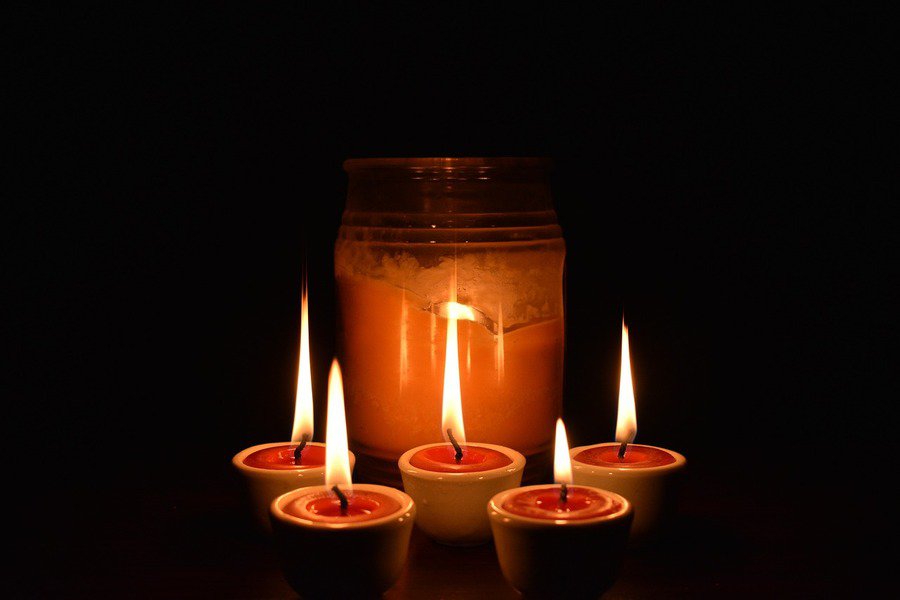Tea lights have long been cherished for their warm, flickering glow, casting a soothing ambiance in our homes and enhancing special occasions. However, to fully appreciate and maximize the utility of these miniature candles, it’s crucial to understand a fundamental question: how long do tea lights burn? Whether you use them for decorative purposes, aromatherapy, or emergency lighting, grasping tea light burn times can enhance your candle-burning experience while ensuring safety. In this article, we delve into the science and art of tea light burn times, exploring the factors at play, debunking common misconceptions, and offering practical tips to help you make the most of these charming little flames.
How Long Do Tea Lights Burn?
The burn time of tea lights can vary depending on several factors. On average, a standard tea light typically burns for around 3 to 4 hours. However, factors such as the wax type, the wick’s size, environmental conditions, and how well you maintain the candle can influence its burn time. It’s essential to check the manufacturer’s label for specific guidelines and practice safe candle usage to maximize lifespan.
Common Uses Of Tea Lights
Tea lights, those small, unassuming candles, have a surprisingly wide range of common uses beyond their compact size. Here’s a more detailed exploration of some of these common uses:
Tea lights often create a warm and inviting atmosphere in homes, restaurants, and special events. Placed in decorative holders, they can enhance the aesthetics of any space with their gentle, flickering glow. Tea lights are a favorite choice for adding charm to table centerpieces at weddings, parties, and romantic dinners. Their small size allows them easily incorporated into floral arrangements or candle displays.
Scented tea lights are widely employed in aromatherapy to set the mood and promote relaxation. The soothing scents can range from lavender for calming to citrus for invigoration, making them a staple in spa settings or during meditation sessions.
Due to their long burn times relative to their size, tea lights can be a reliable source of emergency lighting during power outages or when camping. They provide enough illumination to navigate through dark spaces and perform essential tasks. Tea lights create a magical and ethereal ambiance when placed in water-filled containers like bowls, ponds, or swimming pools. This is common at outdoor events, particularly weddings and garden parties.
Tea lights enclosed in paper bags or specially designed luminaries are used to line pathways or driveways, providing both functional lighting and a decorative touch during outdoor events or holidays, such as Diwali.
Tea lights can be found in various candleholders, including wall sconces, lanterns, candelabras, and more. These holders not only enhance the aesthetic appeal of the tea lights but also offer unique lighting displays.
Many cultures and religious traditions incorporate tea lights into ceremonies, rituals, and prayers. The small flames symbolize hope, purity, and enlightenment in various spiritual practices. Craft enthusiasts often use tea lights as essential for creative do-it-yourself (DIY) projects. From making homemade candles to crafting unique home decor items like candle jars, tea lights provide a versatile canvas for creativity.
Tea lights infused with insect-repelling scents, such as citronella, are a practical choice for keeping pesky bugs at bay during outdoor gatherings. They offer both illumination and protection from unwelcome guests.
Factors Influencing Tea Light Burn Times
Several factors influence the burn times of tea lights, making it essential to understand these variables to maximize the lifespan and effectiveness of these small candles. Here, we delve into these factors in detail:
Candle Composition And Materials:
The wax used in tea lights significantly affects their burn times. Common wax types include paraffin, soy, beeswax, and palm. Paraffin tea lights tend to burn quicker than soy or beeswax, which burn more slowly. The composition of the wax, including additives or fragrances, can also impact burn times.
Wick Materials And Sizes:
The wick plays a crucial role in how a tea light burns. Thicker wicks tend to burn longer because they deliver more fuel (wax) to the flame. Additionally, the material of the wick can make a difference. Cotton wicks are common and provide consistent burning, while wooden or zinc-core wicks can have varying effects on burn times.
Container Or Holder Design:
Tea lights are often placed in metal or plastic containers or holders. The design of these containers can affect burn times. A deeper container can allow the tea light to burn longer by insulating the flame from drafts and preserving heat.
Environmental Conditions:
The environment in which a tea light is burned can impact its lifespan. Room temperature, humidity levels, and airflow all play roles. A drafty room can cause the flame to flicker and consume wax more quickly, resulting in a shorter burn time. Conversely, still air and stable room conditions can extend burn times.
Burning Practices:
How you use and maintain the tea light matters. Properly trimming the wick to around 1/4 inch before lighting can promote a steady, even burn. Burning the tea light for shorter durations, rather than letting it burn continuously for hours, can help extend its lifespan. Extinguishing the flame by snuffing it rather than blowing it out can also reduce excessive wax consumption.
Varieties Of Tea Lights Available In The Market
The market offers a wide range of tea lights to cater to different preferences and needs. Here are some of the common varieties of tea lights available:
Standard Tea Lights: These are the most common tea lights available. They are typically made of paraffin wax and have a standard burn time of 3 to 4 hours. They come in plain metal or plastic cups and are widely used for various purposes.
Scented Tea Lights: Scented tea lights infuse various fragrances, such as lavender, vanilla, citrus, or floral scents. They are famous for aromatherapy, relaxation, and creating a pleasant ambiance. Scented tea lights can enhance the overall atmosphere in a room.
Long-Burning Tea Lights: Designed to burn for extended periods, long-burning tea lights can illuminate 6 to 8 hours or even longer. They are ideal for events that require prolonged lighting, like weddings or all-night gatherings.
Beeswax Tea Lights: Beeswax tea lights are known for their natural and eco-friendly composition. They produce a subtle honey-like scent and typically have a longer burn time than paraffin wax tea lights. Beeswax tea lights are favored by those who prefer organic and sustainable options.
Soy Tea Lights: Soy tea lights are made from soybean wax, which is biodegradable and renewable. They burn cleanly and evenly and are often considered a more eco-conscious choice. They are available in a variety of scents and colors.
Colored Tea Lights: These tea lights are available in a wide range of colors, allowing you to match them with your décor or create visually appealing displays. Colored tea lights are used for thematic events, holidays, or artistic arrangements.
Flameless Tea Lights: Flameless or LED tea lights are electronic alternatives to traditional candles. They mimic the appearance of a real flame without the associated fire risk. Flameless tea lights are often used for safety in homes with children or pets and in venues where open flames are prohibited.
Decorative Tea Lights: They come in various shapes, sizes, and designs, making them visually appealing when not lit. They can add an artistic or festive touch to your space, even when not used for illumination.
Conclusion
Tea lights are more than just tiny candles; they are versatile and adaptable, offering many options to suit different occasions and preferences. Whether you’re looking to create a warm and inviting atmosphere, indulge in aromatherapy, or simply ensure you have a reliable source of emergency lighting, there’s a tea light variety tailored to your needs. The market provides an array of choices from standard tea lights to scented, long-burning, and eco-friendly options like beeswax and soy tea lights. You can also explore flameless, decorative, and bug-repelling tea lights to cater to specific requirements.










